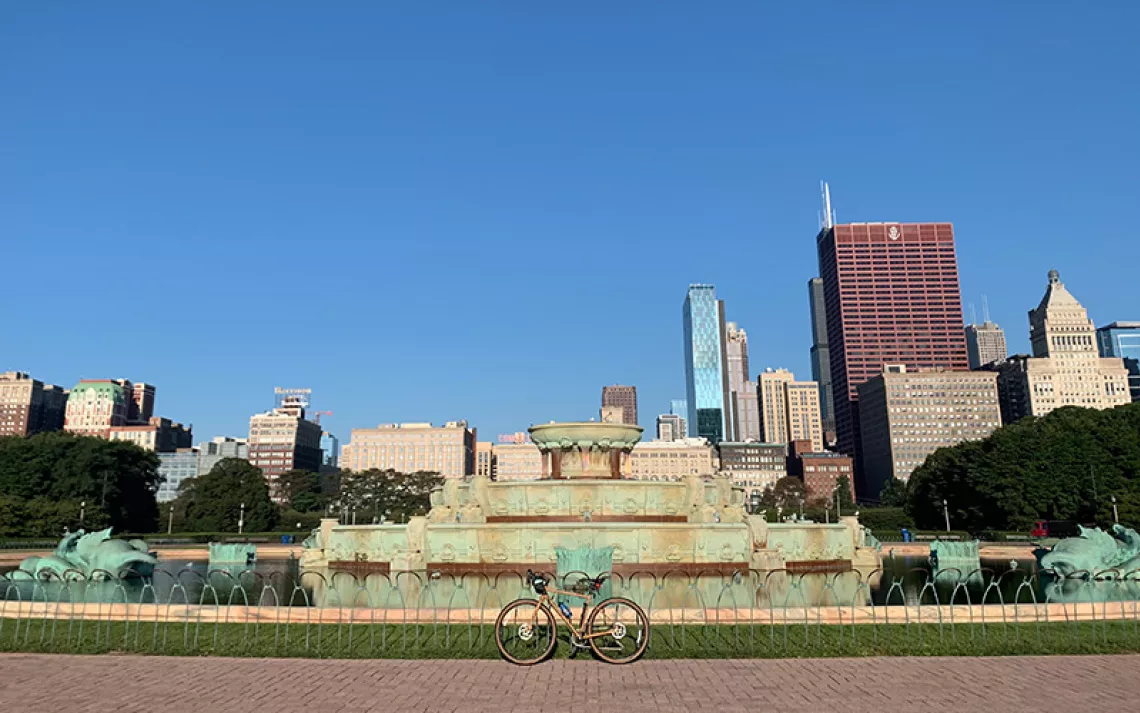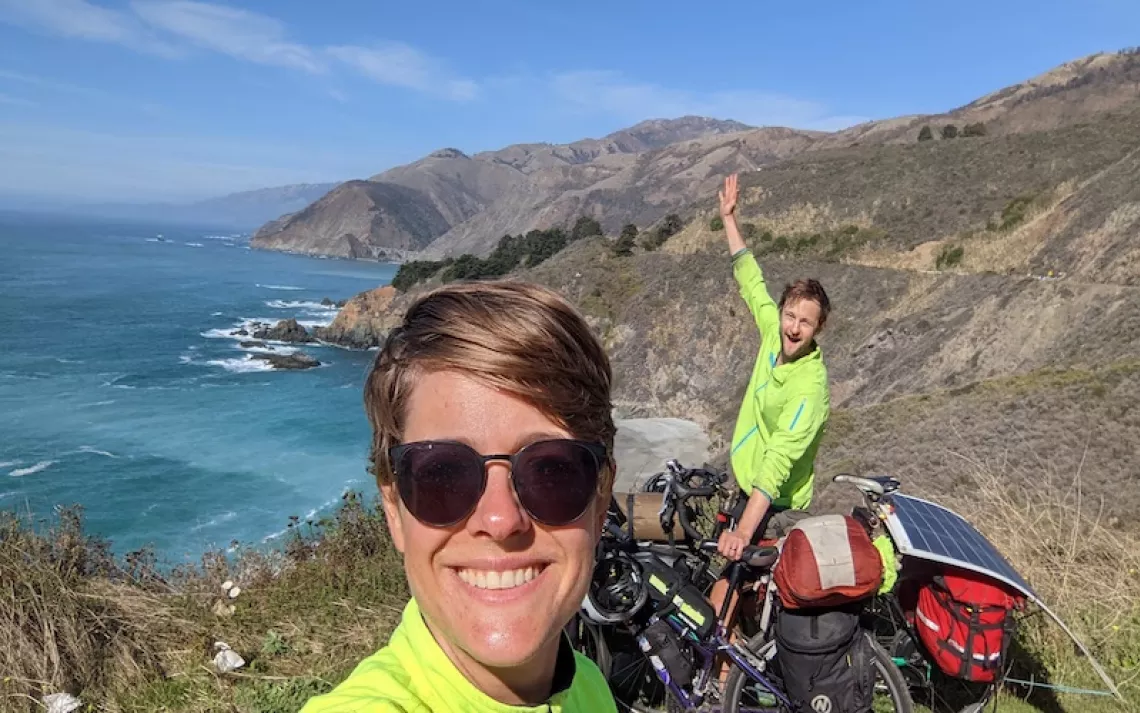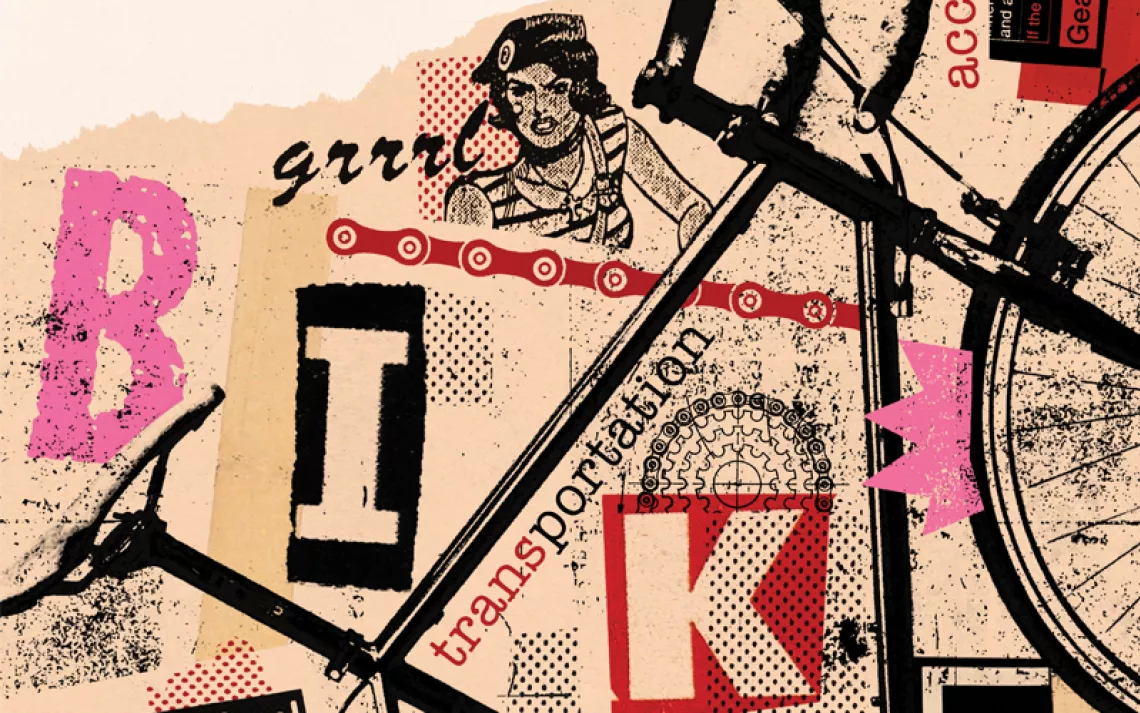Leaf Peeping on Two Wheels
Here’s where bike lovers should head for fabulous fall foliage
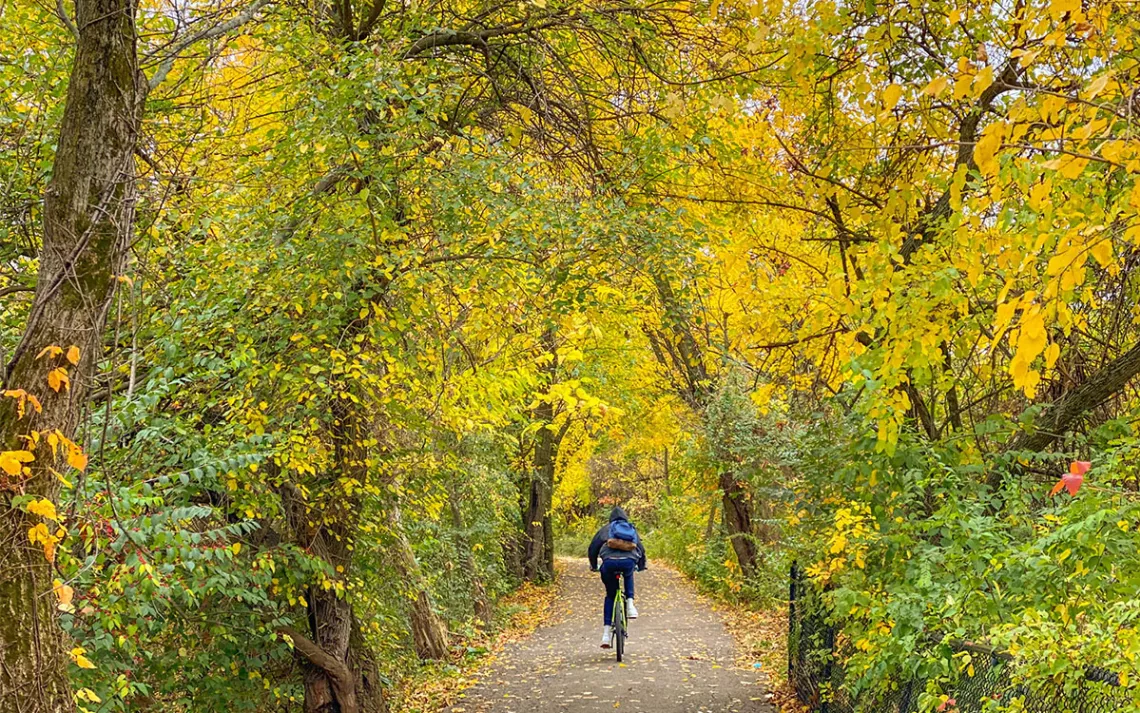
Fall is pretty much the perfect time for everything. The sweltering summer heat has transitioned to temperatures that are more comfortable for exploring, the mosquitoes are no longer a threat, and life seems a bit more relaxed. And what better way to explore this cooler weather and relaxed pace than on two wheels? Here are some bike-friendly destinations where you can find fall foliage at its finest.
Madison, Wisconsin
For a small city, Madison has an impressive array of options for cyclists and nature lovers. With over 270 parks and 200 miles of trails, this capital city makes it easy to get around without a car. In fact, it received one of only five of the coveted Platinum Bicycle Friendly Community status awards from the League of American Bicyclists. Madison has installed pedestrian and bicycle bridges over major highways, cross-flow bike lanes (bike lanes going in both directions on a one-way street), bicycle crossing signals at intersections, and an extensive network of bike lanes that connect Madison with surrounding communities. The city recently launched Madison By Bike, which offers routes and discounts when you check in at local restaurants and businesses, including getting a discount on their bike-share program, BCycle, if you didn’t bring your own wheels.
This college town is also full of foliage, so most streets and paths are lined with trees shifting to vibrant oranges, yellows, and reds. Especially scenic routes can be found through the Arboretum or along and around Lake Mendota and Lake Monona. For a longer ride, hop on the Badger State Rail Trail (a former railroad line converted to a multiuse trail) that runs through 40 miles of farmlands, woods, meadows, and prairies between Madison and the Wisconsin-Illinois border.
Bar Harbor, Maine
Acadia National Park is considered one of the best places to enjoy fall foliage and with good reason. Not only can this woodland wonderland be explored by foot or car via 27 miles of motor roads and 158 miles of hiking trails, but the park is also unique in that it has 45 miles of bike-friendly carriage roads, which are closed to traffic. Built by John D. Rockefeller Jr. in the early 1900s, this series of hard-packed gravel trails meander through the park’s mountains and valleys, cutting through dense forests populated with spruce-fir, oak, maple, and beech. Four-, six-, and 11-mile loops scatter Acadia and could easily be linked together for longer rides.
Because the trails are car-free, they’re a relaxed way to enjoy the park and perfect for beginner cyclists and families. Experienced cyclists will also love the carriage roads, but if they’re accustomed to riding in traffic, they could also bike the famous Park Loop Road. This 22-mile paved route weaves its way through Acadia and includes a stunning section where the park’s granite coast bumps up against the crashing waves of the Atlantic Ocean. Bar Harbor is the gateway town to the park, where you can rent a bike and pedal directly to the park—no car required.
Minnesota
While Minneapolis may be best known for a 5.5-mile former railyard corridor called the Greenway, this is just one small section of the city’s 250-mile network of on- and off-street bikeways. The city was named the “Number #1 Bike City” by Bicycling Magazine in 2010, but their love of cycling goes back much further. According to a map from the St. Paul Cycle Path Association at the Minnesota Historical Society, bike routes linked parks in the Twin Cities as early as 1899. Today, the Grand Rounds National Scenic Byway is one of the best examples of parks being linked by bike paths. The scenic 55-mile route contains heavily wooded and foliage-filled areas along the Mississippi River waterfront, around the lake loops in the city’s Chain of Lakes area, and through Minnehaha Park (be sure to stop and see the massive waterfall). It’s one of the country’s longest continuous systems of public urban parkways.
Minnesota’s largest city may be full of pretty parks and lovely loops that light up in a dizzying array of colors each autumn, but for the best fall foliage, you’ll have to head farther north. The Gitchi-Gami State Trail in northeastern Minnesota follows the shore of Lake Superior, taking in breathtaking views of yellow leaf-covered red cliffs towering over the shores of Gichigami (Ojibwe for Lake Superior). Currently, the trail has 33 miles completed, but the plan is to extend it to 88 miles, connecting five state parks along the way. One of the most stunning sections is the Gooseberry Loop, a 30-mile out-and-back loop between Gooseberry Falls State Park and Beaver Bay, which takes you past huge waterfalls and through dense coniferous forest, where various shades of green turn to brilliant reds, yellows, and orange. Riders interested in experiencing true wilderness and gravel biking may want to look into the 630-mile North Woods Route, which circumnavigates the western half of Lake Superior, stretching from northern Minnesota down to Wisconsin, then up Michigan’s Upper Peninsula.
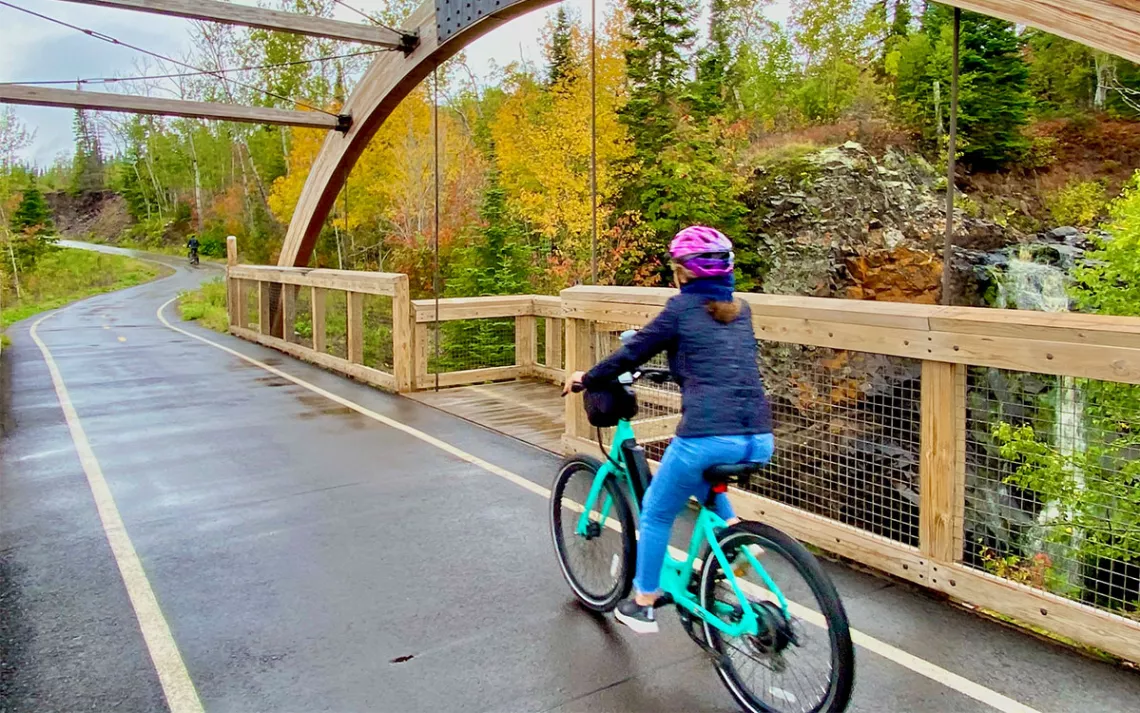
Pittsburgh, Pennsylvania
Not only is Pittsburgh an excellent city for cycling, but here, arbor abounds. Steel City is easily accessible by Amtrak (which allows you to bring your bike on board), so it’s also one of the best places for leaf peeping accessible by train. The Burgh is blanketed with well-marked biking trails, several following gorgeous riverfront parks that are exploding with colorful trees. For those desiring distance, follow the tree-studded bike routes to the 150-mile Great Allegheny Passage, also known as the GAP trail. This nonmotorized path begins in Pittsburgh and runs all the way to Washington, DC, winding its way over wrought-iron bridges, through former railway tunnels, and passing by cultural museums and historic sites. If you also enjoy hiking, bring your boots, as there will be plenty of opportunities to trek. When it comes time to rest your head, pick between dozens of comfortable campsites and bed-and-breakfasts along the route, but be sure to book in advance, especially over the weekend.
New York
New York State is famous for many things, from food and fashion to art and architecture. Still, for some reason, those outside the Empire State are unaware of the enormous number of state parks, wilderness areas, and long-distance hiking and biking trails that crisscross the state. Upstate New York’s Adirondack Park, better known simply as the Adirondacks, is a national historic landmark that is basically New York’s version of a national park. Spanning an impressive 6 million acres, it is the largest publicly protected area in the contiguous United States, and its many mountains and tiny towns make it the perfect place for cycling through fiery fall foliage. Lake Placid is a great place to base yourself because you’ll find many activities in town, along with great restaurants and shops specializing in locally made products.
Meanwhile, in New York City you’ll find the (admittedly very urban) start of the Empire State Trail. This recently built trail stretches 750 miles, connecting existing cycling trails with new routes across the state. Beginning in Lower Manhattan, the route runs north to Albany, then splits west to Buffalo (which makes up the 360-mile Erie Canalway) and north to Rouses Point, right on the Canadian border. Both routes take you through urban centers, tiny towns, and rural communities, where impressive autumn landscapes lit up with every color imaginable.
 The Magazine of The Sierra Club
The Magazine of The Sierra Club

